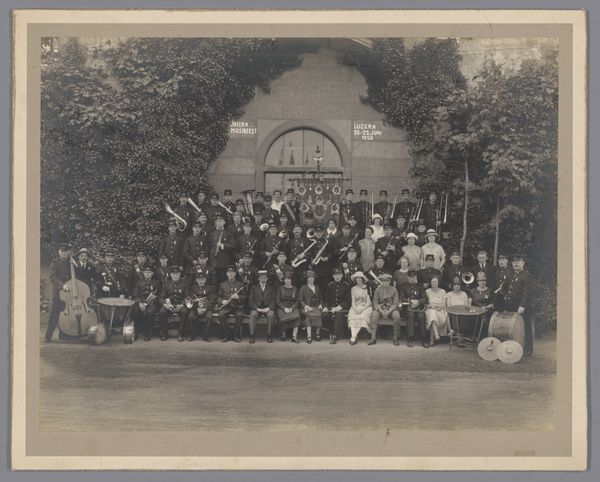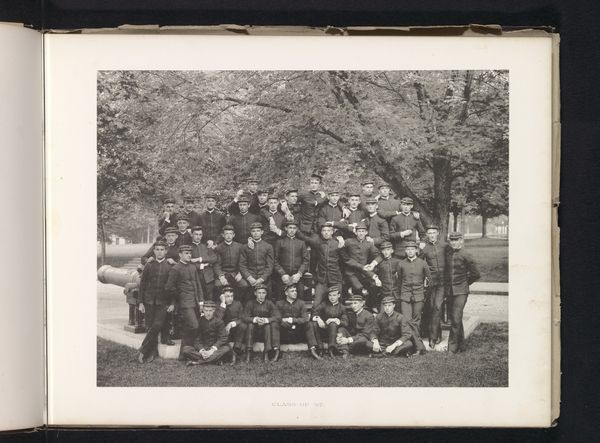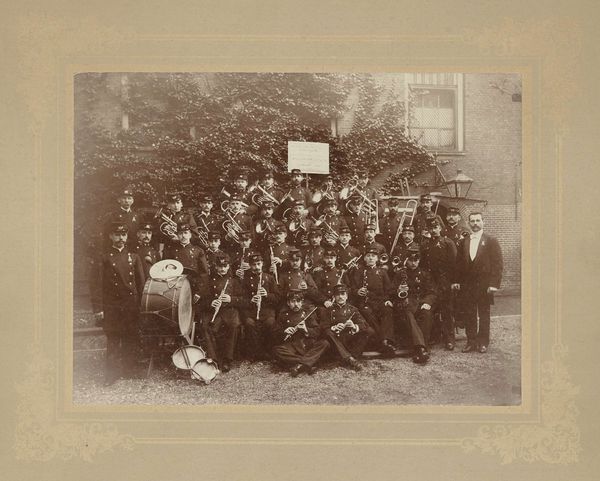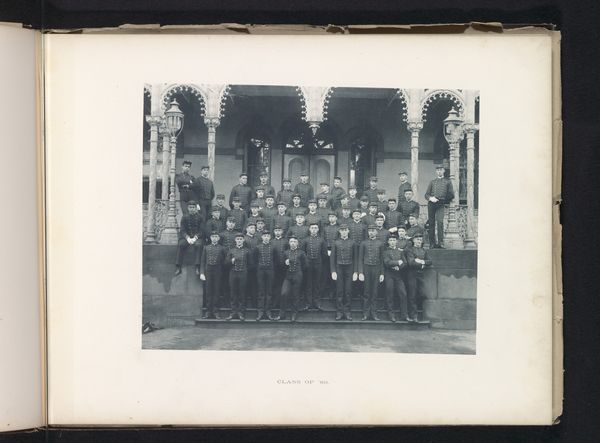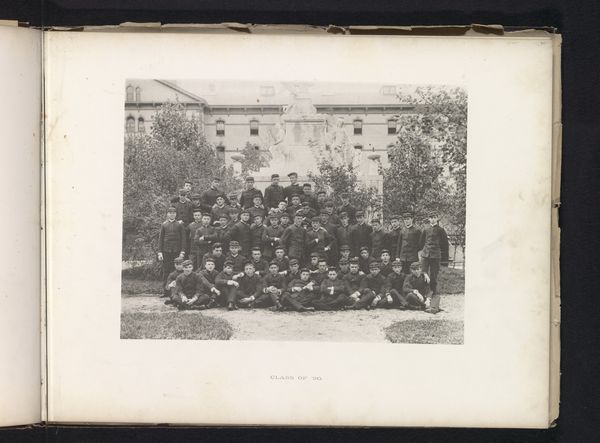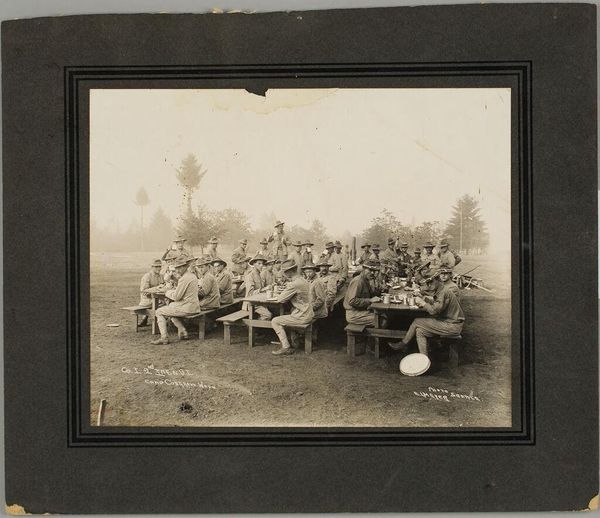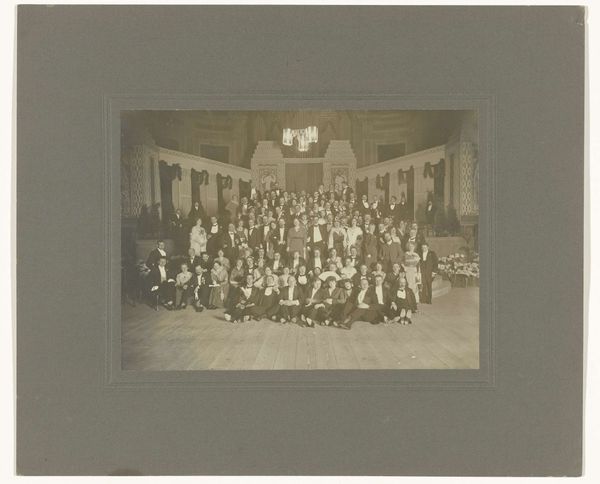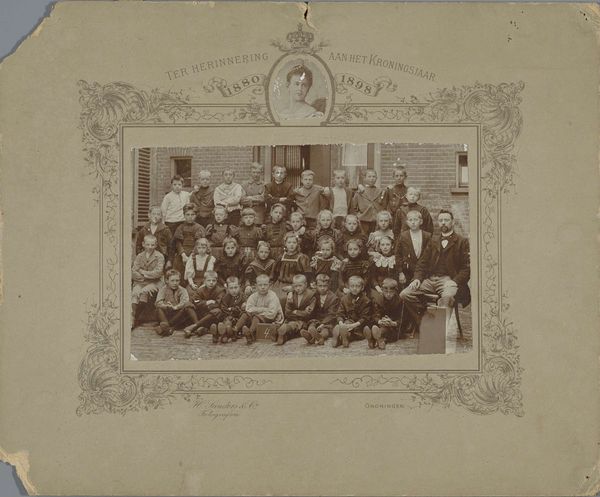
Herinnering aan de diensttijd van Füsilier-Regiment „Fürst Karl-Anton von Hohenzollern“ (Hohenzollernsches) Nr. 40 c. 1901s
0:00
0:00
print, photography
#
portrait
#
narrative-art
# print
#
german-expressionism
#
photography
#
group-portraits
#
cityscape
#
history-painting
Dimensions: height 393 mm, width 491 mm
Copyright: Rijks Museum: Open Domain
Curator: So, we're looking at this intriguing print from around the 1900s, "Herinnering aan de diensttijd van Füsilier-Regiment ‘Fürst Karl-Anton von Hohenzollern’ (Hohenzollernsches) Nr. 40" – a photograph transformed into a printed memento of military service. Quite a mouthful! What are your initial thoughts? Editor: My first thought is, what a rigid and yet intimate composition. It feels incredibly posed but also vulnerable, a memory meticulously crafted in sepia tones. The weight of obligation just radiates, even beyond the individuals represented. Curator: Absolutely. What strikes me is how it merges photography, graphic design, and a kind of propaganda, really. This wasn’t just about recording a moment; it was about manufacturing a memory, one for private keepsake as much as public image building. What about its materiality draws you in? Editor: Well, look at the photographic print itself, framed with ornate, almost frivolous decorations. Then see how the architecture and statue act as a backdrop to this sea of uniformed men. Someone meticulously staged all of this. Each element from their tailored clothing to the city depicted represents the material manifestations of Imperial power. I imagine the labour involved in the making and distribution of so many personalized versions, an early form of mass customization for the military class! Curator: Exactly! Think of the symbolism woven into the design, beyond the straightforward military regalia. It’s fascinating to me how such formality coexists with personal commemoration, the framed dedication notes… it adds an unexpected intimacy. The portrait in the roundel above and the architecture really seem to imply Germany at the time. Editor: And it begs the question: who consumes this imagery and how? This isn't simply a record, but a consumable item laden with societal meaning, distributed and treasured. A token that turns something as potentially dreadful as conscription into sentimental patriotism, something material and manageable. How potent! Curator: I agree; it’s a compelling paradox. A poignant memento of a transient moment, solidified in a constructed narrative, shaped by both individual sentimentality and collective ideologies. It’s about service and brotherhood – isn’t there something in this almost stage-managed production and mass distribution to feel incredibly human? Editor: Perhaps that's where the material of memory really resides – in that tension between rigid structures and sentimental expressions, made physical through prints like this. Food for thought on how societies transform individual experience into collective mythologies.
Comments
No comments
Be the first to comment and join the conversation on the ultimate creative platform.
